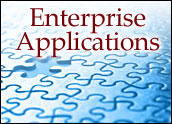
The proliferation of marketing channels and globalization remain key challenges for every organization. Digital content continues to expand at exponential rates as new marketing channels surface. CMOs and marketing executives are looking for ways to deliver more than simple asset repositories with content management tools.
Recent research from the Aberdeen Group — “Marketing Digital Asset Management: Capturing, Storing, and Retrieving Digital Media to Deliver Strategic Value” — explores the strategic value of digital asset management solutions for marketing departments.
The study revealed a number of surprising results about how top performing organizations (Best-in-Class) leverage digital asset management tools in marketing. The research also explores top features and benefits Best-in-Class organizations receive from asset management tools.
What Is the Difference Between Digital Asset Solutions?
- Marketing resource management (MRM). This term is generally used by marketing automation providers. MRM technologies typically provide document storage and retrieval as a subset of a larger group of features supporting marketing operations activities (event management, campaign management, etc.)
- Digital asset management (DAM). Provides functionality to manage, store and retrieve structured and unstructured data. DAM is often used by marketing for digital archiving, document management and workflow (for collateral, text, photos, rich media, video, audio and more). Many DAM solutions integrate with creative tools to support the creative process.
- Marketing asset management (MAM). Provides DAM functionality that is exclusively focused on marketing applications and frequently integrates with collateral customization and marketing automation technologies to provide seamless asset management through content distribution workflow.
- Enterprise content management (ECM). Provides management for all unstructured information wherever that information exists in an organization. Suite providers of ECM help manage content for multiple business functions (sales, operations, finance, marketing, legal, etc.) Common functionalities include, DAM, Web content management, document management, workflow and business processes, and records management. Subsets of ECM may be used to support the marketing or advertising department.
- Web content management (WCM). These solutions typically provide functionality for managing and optimizing marketing content online. Web content management is usually a separate offering from DAM; however, many organizations leverage DAM or ECM as part of their overall Web content management strategy.
Is There Strategic Value in Marketing Asset Management?
Absolutely! Aberdeen segmented the top 20 percent of respondents in return on marketing investments (ROMI), brand effectiveness, and time-to-market performance to isolate Best-in-Class organizations. Then, we look at what these Best-in-Class companies are doing differently to achieve superior performance. Fifty-seven percent used marketing asset management solutions.
The research demonstrates how Best-in-Class achieved the highest performance through a combination of processes, performance measurements, knowledge management practices, organizational culture and technology use. These organizations devote time and resources to maximizing and optimizing digital asset management on an ongoing basis.
Quantitative Strategic Value
However, you don’t have to be a Best-in-Class organization to deliver value with marketing asset management. Aberdeen compared the year-over-year performance of organizations that recently adopted a marketing asset management solution (leveraging it for approximately one year) versus organizations that do not have marketing asset management solution.
The research shows that organizations that had been using digital asset solutions for approximately one year, achieved higher average performance than those that did not have marketing asset management solutions:
Average Performance
Using DAM (1 Yr)Average Performance
Not Using DAMReturn on Marketing InvestmentsIncreased 22 percentIncreased 11 percentCustomer SatisfactionIncreased 11 percentIncreased 6 percentCustomer Churn RateDecreased 6 percentDecreased 1 percentTime to MarketDecreased 4 percentNo ChangeCost of Content CreationDecreased 6 percentIncreased 5 percentShipping CostsDecreased 7 percentIncreased 2 percentProduction CostsDecreased 7 percentIncreased 2 percent
Qualitative Strategic Value
Best-in-Class demonstrate an aptitude for constant measurement, which allows them to optimize and maximize investments in digital asset technology:
- Twenty-eight percent of the Best-in-Class identify measurable goals and anticipated results prior to DAM implementation (versus 3 percent of Laggards).
- Forty-one percent of Best-in-Class use pre-defined metrics to measure the performance after the DAM implementation (versus 0 percent of Laggards).
Best-in Class organizations are actually measuring the strategic value of the technology investment and have processes in place to do so prior to implementation. More importantly, Best-in-Class follow-up with post implementation measurement and adjust processes accordingly to maximize ROI. Of course, strategic value is also delivered through qualitative improvements, which are typically expressed as key benefits to marketing asset management technologies: time savings, cost reduction (often a quantitative metric as well), employee productivity, asset utilization, etc. Best-in-Class rely on technology to identify asset usage statistics. By identifying what content is being consumed, marketing can consistently maximize marketing effectiveness and content relevancy.
What Features Do Top-Performing Organizations Find Most Useful?
Aberdeen research reveals that Best-in-Class companies that are currently leveraging marketing digital asset management technologies consider searchable access to assets (75 percent) and integration with creative technologies (75 percent) to be key enablers to delivering strategic value with MAM.
Interestingly, Best-in-Class organizations are two-times more likely than all others to consider integration with creative tools to be a key enabler. Interviews with respondents indicated integration with creative tools delivered strategic value for marketing when creative integration was a part of a broader workflow process supporting the entire marketing asset lifecycle. Top performing organizations indicated version control was the third most valuable feature of marketing asset management technologies.
Steps to Success
- Democratize access to marketing assets. Ninety-nine percent of Best-in-Class organizations provide both sales and marketing access to the marketing digital asset tool. Sixty-seven percent of Laggards leverage a shared drive on an internal network and 52 percent store marketing content on individual employee hard drives. Digital asset management solutions can speed the time it takes to locate a file, manage versioning, and centralize content for remote individuals or regional locations. Delivering centralized access to content doesn’t have to cost an arm and a leg. Small to medium sized businesses can leverage content indexing functionalities on shared drives to deliver rapid searchable access to content- but these typically do not provide workflow or document management- which Best-in-Class heavily leverage. On average, 79 percent of organizations indicate search functionality is a key enabler for delivering strategic value with digital asset management technology.
- Measure asset utilization (using technology, if it exists in the organization). Best-in-Class companies are 11-times more likely than Laggards to use content usage analytics functionalities and 13-times more likely to implement dashboards to report on digital asset utilization. By measuring the effectiveness of digital assets, Laggards can identify how assets are being utilized and ways to maximize marketing effectiveness. On average, 42 percent of Best-in-Class content is repurposed (versus 21 percent of Laggards). Repurposing assets allows for greater economies and cost savings.
- Identify business drivers and formalize a process for measuring the return on technology investments prior to implementing the technology. Then measure the change in key metrics / business drivers after implementation. The Best-in-Class demonstrate that strategic value is delivered through continuous optimization of asset management processes. Twenty-seven percent of Laggards are currently using a digital asset management solution and 24 percent use a digital asset solution specifically for marketing. The remaining 54 percent of Laggards that are planning on implementing marketing asset management in the next one to two years need to identify business drivers prior to implementation. As discussed, there is no single metric for measuring strategic value. Aberdeen research reveals technology alone will not enhance brand consistency, brand effectiveness, or improve ROMI. Laggards need to invest in people and processes to support the technology, making it an integral part of day to day marketing operations. Best-in-Class differentiate use of DAM by leveraging initiatives, strategies, and organizational capabilities that are clearly focused on maximizing investments in digital assets on all three fronts: people, process, and technology.
The Aberdeen report, “Marketing Digital Asset Management: Capturing, Storing, and Retrieving Digital Media to Deliver Strategic Value,” is available for free on the Aberdeen Web site.
Ian Michiels is a senior research analyst at the Aberdeen Group. Michiels covers marketing management and digital marketing in the customer experience management group. He can be reached at [email protected].






















































